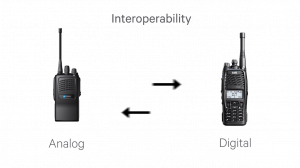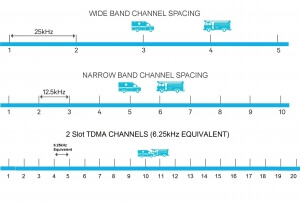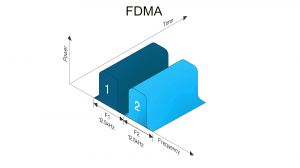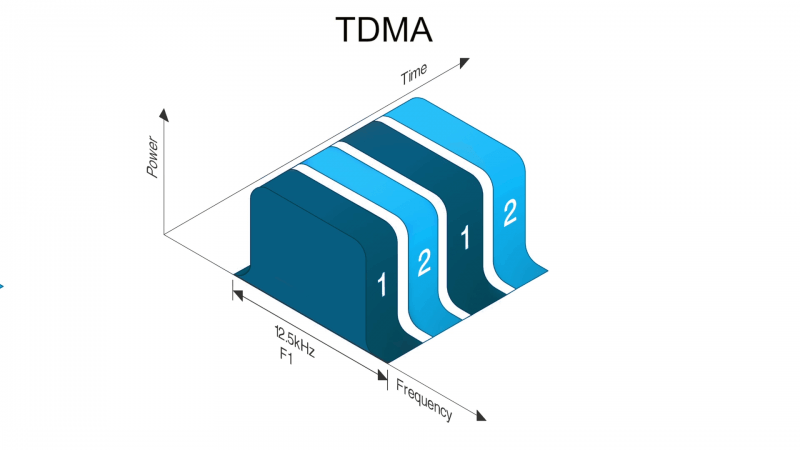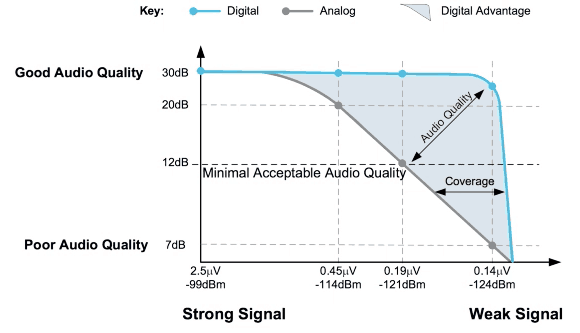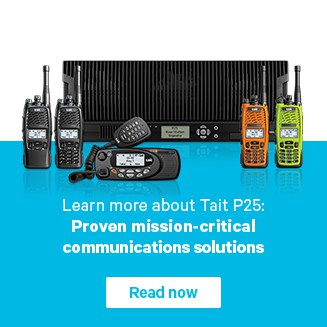Introduction to P25
P25 Standard
Benefits of P25
We’re often asked, “What are the benefits of P25?”
Every type of radio system has different pros and cons, so it depends on what you’re comparing to P25. Therefore in this section, we will simply list some of the benefits of P25. These will help you compare P25, either with your existing radio system or other technologies that you are considering.
1) Open Standards: P25 is an open standard, and this provides choice and price competition. This results in a wide range of products in the market to choose from, including the mobile and portable radios, repeaters, and network equipment, as well as different dispatch solutions. An open standard also means interoperability. This is the ability for different vendors’ radio equipment to work together, but it also means that different agencies and teams can communicate, even if they have purchased their P25 equipment from different vendors. Compatible equipment is only one aspect of interoperability. There still needs to be planning, coordination, and training on how the equipment will be used.
The interoperability continuum developed by SAFECOM, an emergency communications program of the Department of Homeland Security, is designed to assist emergency response agencies plan and implement interoperability solutions for data and voice communications covering aspects such as the governance, standard operating procedures, the technology (this is where P25 comes in), as well as training and exercises in usage. Learn more about interoperability with the interoperability continuum on their website.
2) Price Competition: Having a range of vendors to choose from results in price competition, both at the time a new network is installed, and throughout the life of the system as it expands or parts get replaced.
3) Migration path is another aspect of P25 that has been important from the beginning. Phase 1 P25 digital radios included an analog FM mode of operation, allowing communication with older analog FM radios. This allowed P25 to be rolled out in a staged process. Perhaps the network equipment was upgraded first, and mobiles and portables rolled out later, or vice-versa. Or maybe the key tactical teams are issued P25 radios, but can still talk to other supporting teams or agencies who have not yet been upgraded to P25.
P25 Phase 2 is more frequency efficient than Phase 1 P25 equipment, but will still support a Phase 1 mode of operation. This allows backward compatibility with Phase 1 equipment and a gradual migration of the system to Phase 2.
4) Frequency efficient: One of the original drivers for moving to digital is that it is more frequency efficient. The IRF spectrum was getting very full, and digital allowed more radio channels to be made available in the same physical location. P25 Phase 1 uses the same bandwidth as narrow band analog FM channel. P25 Phase 2 will be twice efficient as P25 Phase 1 because it uses TDMA.
5) Frequency re-use: P25 equipment is available in many different frequency bands including VHF, UHF, 700 and 800 MHz bands. Because P25 occupies the same bandwidth as a narrow band FM radio channel, many agencies can keep their existing radio channels, and simply upgrade their equipment to P25. Alternatively, if a new radio system is being deployed, there is a large amount of flexibility to choose the frequency band that best suits the requirements of the new network, or is available in the region.
6) Digital radio standard: This means you get the benefits of digital audio quality, as described in the Basic Radio Academy course. In summary, an analog FM radio system will sound more noisy and distorted, the further away from the repeater that you move. Even when operating in the designed coverage area of the radio system, there will still be a level of noise, hiss, and distortion on the radio channel. For P25 digital radio systems, they can be designed so that within the normal operating area of the system, the audio quality is maintained at the same high level.
7) Encryption: P25 was designed for public safety and first responder applications. One of the key requirements is to encrypt communications, so it cannot be intercepted by a third party. This can be very important for police and tactical teams, where interception of their communications could give away their position or the operation that’s taking place. It’s also very important for health professionals, where medical records or medical data has to be transmitted over the air to the front line responding staff.
8) P25 Features and Services: P25 has many features that were designed for public safety use. Many of the features and services provided by P25 are direct replacements for existing features used by public safety professionals on their existing radio network. This means that there is no change to standard operating procedures and very limited retraining on the new equipment for staff. These will be explored further in the next video topic.
 Radio Academy
Radio Academy

